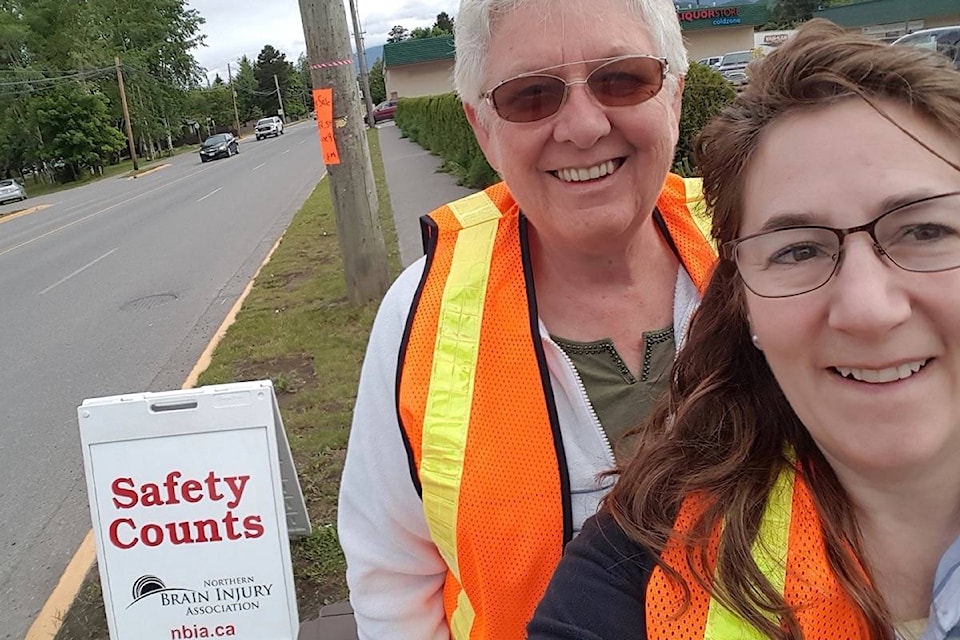THE Eby and Lazelle four-way stop is not only one of the city’s busiest intersections but it also has the potential to be one of its more hazardous, says the case manager for the Northern Brain Injury Association who, with two volunteers, recently conducted a safety audit there.
“This year we observed the highest incidents of at-risk practices in Terrace were cycling without helmets, pedestrians and cyclists failing to stop or look before crossing, [and] drivers not stopping on right turns” said Tekah Sabal. It also included “driving with coffee or cigarettes in hand, and some people driving with both earphones in or with dogs on their laps.”
Any one of those incidents has the potential to result in an accident in which a brain injury could result, she added.
Sabal was particularly taken aback by people driving with pet dogs on their laps while juggling a coffee.
And she said some drivers put down their cellphones or lowered their coffee cups and also came to a full stop if they noticed Sabal and the volunteers who were sitting kitty corner to each other at the intersection.
“But others just carried on. They just didn’t care,” said Sabal.
“Pedestrians often asked us what we were doing and expressed their appreciation,” she said. “They then told us of other intersections and had their own stories of near misses.”
One intersection most often mentioned as a problem is Eby and Walsh, just up from Eby and Lazelle where there’s no crosswalk, said Sabal.
“That was especially during school drop off times. That got a lot of mention,” she said.
Up to 1,000 vehicles went through the Eby and Lazelle intersection in an hour.
Sabal said the statistics gathered are used in association presentations to educate people about brain injury and to promote brain injury prevention in Northern B.C.
“Ninety-five per cent of all brain injuries are preventable. Car crashes, cycling and falls are the leading causes of brain injury in British Columbia,” she said.
“Texting while walking is another thing we note that puts pedestrians at risk of a fall or accident,” Sabal added.
She did say the close proximity of the ‘T’ Lakelse and Eby intersection to the Eby and Lazelle one isn’t the best for traffic flow and management.
“People turning right from Lakelse to Eby often don’t take the proper lane - they just skip the inside lane and move into the outer one right away,” she said.
Four other northern communities - Prince Rupert, Quesnel, Fort St. John and Dawson Creek - also conducted audits. Full results from the communities, when compiled, will be published on the association’s website.
The survey was conducted one hour in the morning and one hour in the afternoon of June 10, 12 and 19.
Association volunteers were Deb Willemen and Doug Swank.
